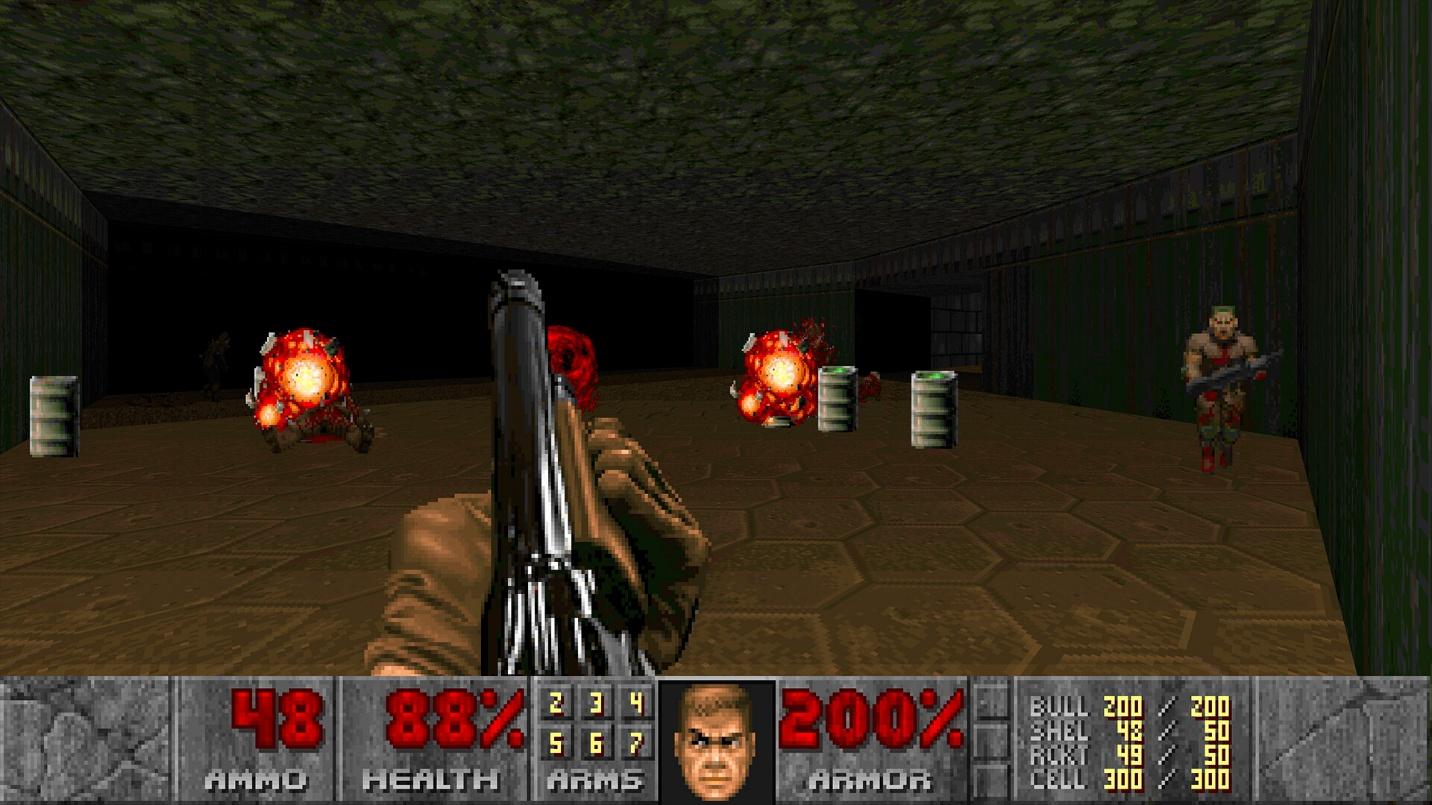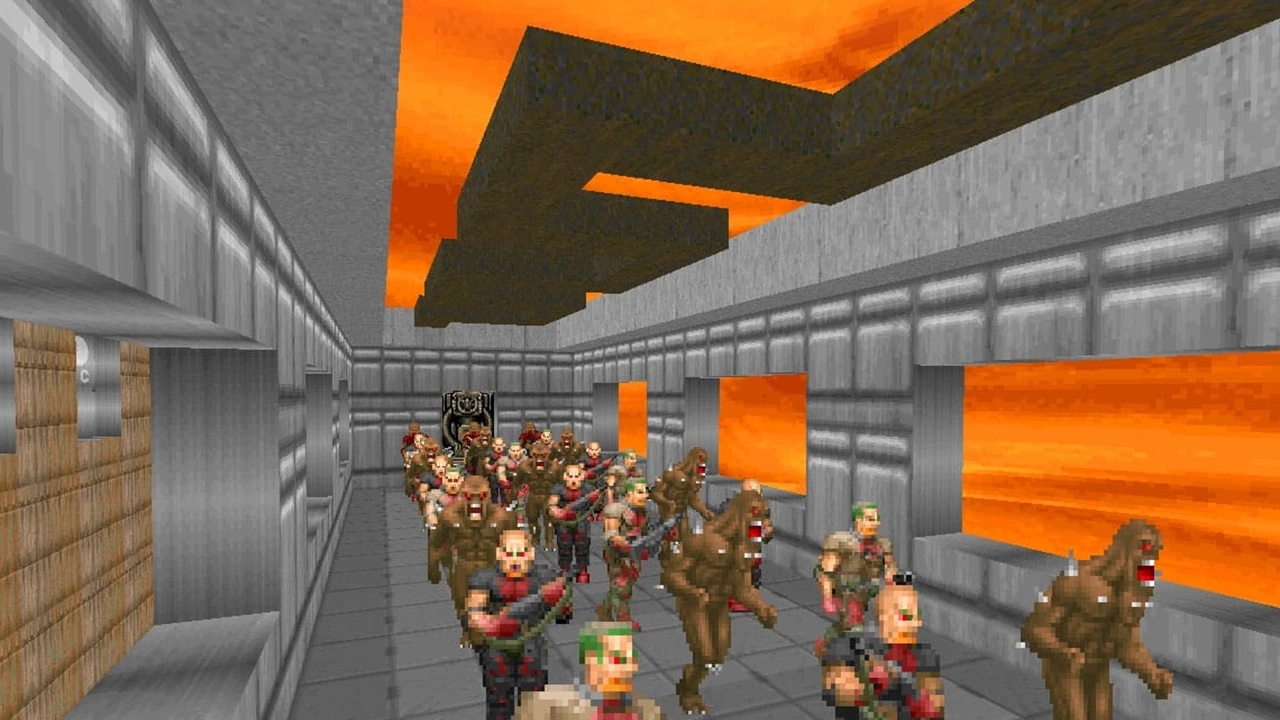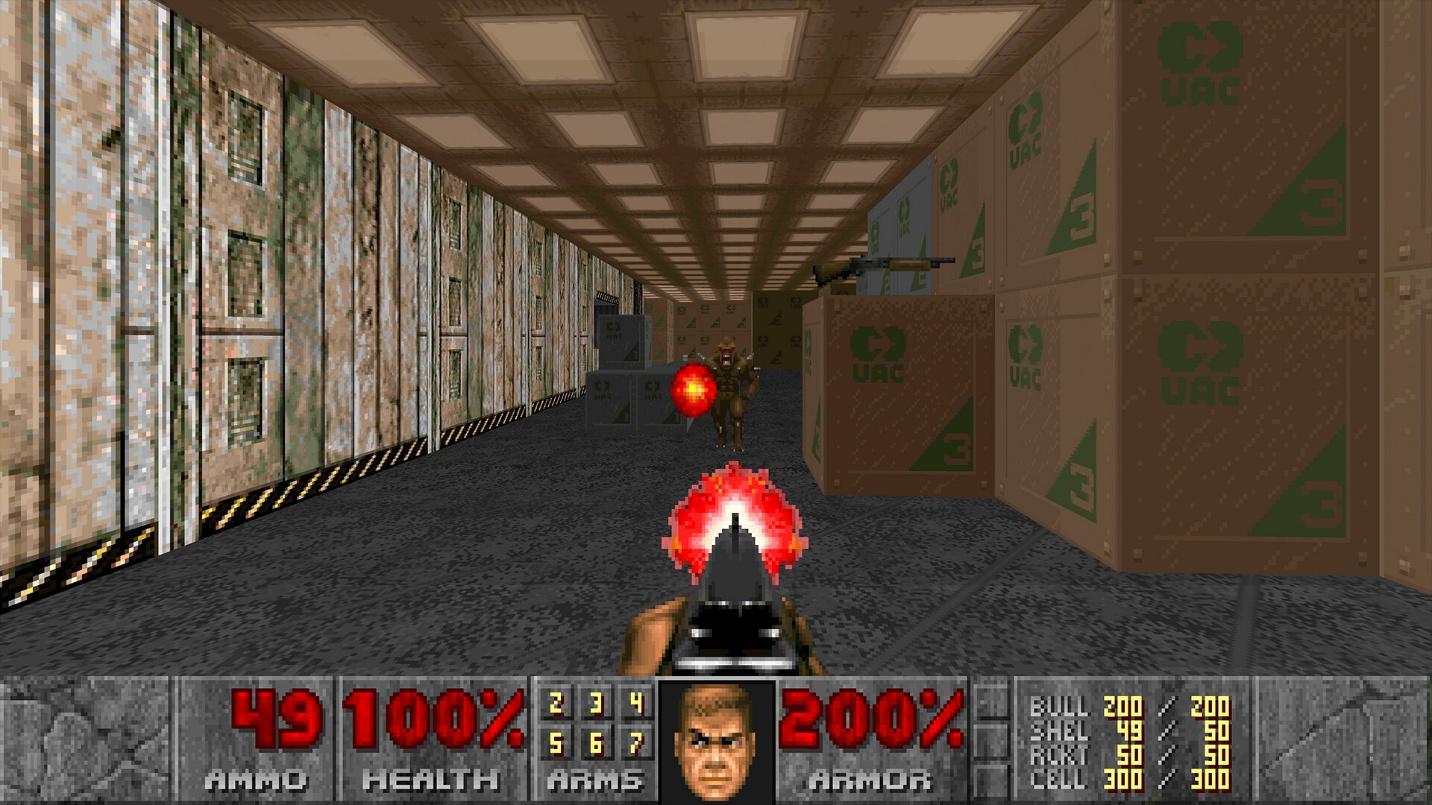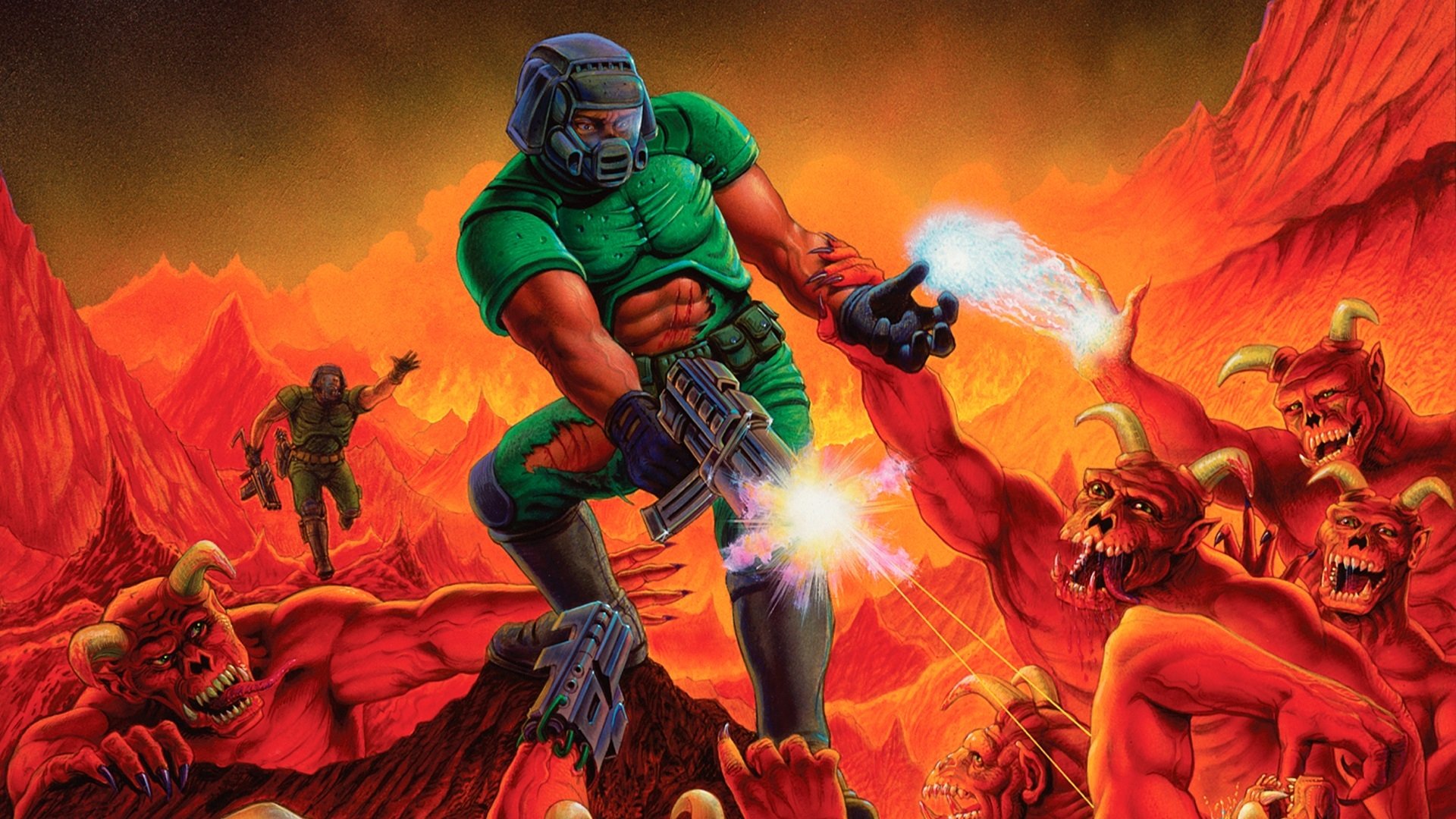When DOOM burst onto the gaming scene in 1993, it wasn’t just another PC release—it was the ignition of a genre and the start of a cultural revolution. If you were around back then, or have since run the original on something as odd as a smart fridge, you know exactly what we mean. DOOM didn’t arrive quietly; it roared, leaving a mark on fans and critics alike. But have you ever wondered how such a world-changing game came to life, or why its legacy endures decades later? We’re about to rewind to those exciting early days, taking you straight into the creative chaos, late-night breakthroughs, and technical wizardry that shaped DOOM. Whether you’re a die-hard retro fan or just a curious newcomer, this story of adrenaline, innovation, and a bit of heavy metal will walk you through the behind-the-scenes making of DOOM—from big ideas and bigger challenges, to the lasting shadow it casts over modern gaming.

- Developed by id Software, it was a technical and creative breakthrough for its time.
Making of DOOM
Back in ’93, DOOM wasn’t just another game– it kicked off the whole FPS craze and changed gaming forever. This is the wild story of how a small team at id Software, with Carmack’s crazy coding and a ton of creative energy, pushed PCs to their limits and gave us the legendary DOOM we still talk about today.
1. The Origins of DOOM
Long before DOOM’s space marines faced the spawn of hell, a little band called id Software was hard at work changing the face of PC gaming. The studio had already tasted success with Commander Keen’s colorful platforming and Wolfenstein 3D’s proto-first-person action. But when John Carmack’s mind-boggling code met John Romero’s hunger for more speed and more chaos, something explosive happened.

- Players take on the role of an unnamed space marine—later dubbed the “Doomguy.”
The team, rounded out by creative worldbuilder Tom Hall and artist Adrian Carmack, dreamed of a game that felt like Aliens with a dash of Evil Dead—sci-fi, horror, and heavy metal energy, all remixed for your DOS computer. DOOM began with one wild mission: what if we took the tech of Wolfenstein and cranked everything to eleven? The team set out to build a shooter that matched the intensity of a rock concert and the suspense of a horror flick, their sights set on something deeper and faster than anyone had seen.
2. The Development Process
Every legend has its growing pains—and the making of DOOM wasn’t a gentle ride. John Carmack’s passion for pushing PCs to their limit meant inventing a new graphical engine, and suddenly “binary space partitioning” wasn’t just jargon—it was the difference between a slideshow and buttery-smooth gameplay. We sometimes wonder if Carmack’s brain ran at 60 frames per second, too.

- His groundbreaking 3D engine in DOOM set new standards for first-person shooters and paved the way for modern game development.
Tom Hall churned out a bible-thick design document for DOOM’s world, imagining a labyrinthine base with layers of story. But in a crunch-fueled whirlwind, the focus shifted: Romero and the team wanted adrenaline, not exposition. Secret rooms, wild weapons, and traps became the goal, each playtest morphing levels into the icons we remember today.
Not every day was a party. There were disagreements (sometimes sharp ones), design rewrites, and months where the sun barely mattered compared to the glow of a monitor. It wasn’t just about surviving monsters on Mars… it was about surviving the marathon of crunch. Once, legend has it, the level editor “DOOMEd” crashed and took a night’s work with it, and yet the team pressed on, forging magic from chaos.
3. Groundbreaking Features of DOOM
Ask anyone about DOOM and you’ll see their eyes light up—maybe they’ll mention the shotgun, or that chainsaw room. It was in the simple genius of its gameplay where DOOM really shone. The introduction of multiplayer deathmatch brought friends together (or turned them mortal enemies) in tiny dorm rooms and offices across America. DOOM was one of the first to say: “Hey, what if your pal could jump in and try to frag you before the demons do?” This was a key part of the making of DOOM and its lasting impact.

- Known for its intense combat, smooth movement, and Mick Gordon’s heavy metal soundtrack, it redefined modern first-person shooters with pure adrenaline.
But that wasn’t all. The game’s dynamic soundscape—thanks to Bobby Prince’s metal-inspired tracks and bone-chilling sound effects—still sends shivers down our spines. The minimal HUD put players’ focus where it mattered: on the heart-pounding action. Room layouts became a playground of exploration, where split-second decisions, secret nooks, and surprise monsters kept adrenaline high.
Even with its technical limitations, DOOM’s enemies displayed AI that felt alive by 1993 standards—imps and cacodemons knew how to corner you, and their pixelated sneers were nightmare fuel for a generation.

- Iconic enemies like Imps, Cacodemons, and Barons of Hell made their terrifying debut here.
4. Controversies and Impact on Gaming Culture
No “behind the scenes: making of DOOM” is complete without revisiting the media firestorm. Parents gasped, religious groups protested, and news anchors wondered if DOOM would warp young minds. When hearing about the game’s violence and grotesqueries, many feared the worst.
Still, DOOM’s influence was impossible to ignore. Journalists coined the term “Doom clone” for every other shooter chasing its formula. It was the subject of congressional hearings, yet thrived through word-of-mouth and, sometimes, banned copies passed around school computer labs. And even now, whenever someone asks, “But can it run DOOM?” you know the game’s pop culture presence is still kicking.
5. Modding and Community Contribution
After launch, the making of DOOM took a surprising turn. Id Software did something unexpected—they gave away the tools, inviting players to remix and re-imagine hell itself. With editable WAD files, the mod scene exploded: players made their own labyrinths, monsters, and even total conversions that turned DOOM into new genres.

- It was one of the first games to support modding, leading to a huge community of custom WADs.
Some mods, like “Alien Vendetta,” became cult classics. The DOOM community was a pioneer—one of the first to show what could happen when developers treated their audience as collaborators. In college dorms and on BBS forums, players swapped floppy disks and tips late into the night, bonding over their shared digital creations.
6. DOOM’s Cultural and Economic Legacy
DOOM didn’t just sell well—it was everywhere. Id Software’s shareware approach (first episode free, pay for the rest) made distributing the game as easy as copying a floppy disk. At one point, DOOM was reported to be installed on more computers than Windows 95. Think about that for a second!
It’s not just the sales, either. DOOM became a blueprint for everything a shooter could be. Sequels, remakes, movies, comics, and years of memes—its DNA spread across pop culture, even popping up in films and TV. Franchises like Halo and Call of Duty owe a nod to DOOM for showing the world what FPS could achieve.
7. DOOM’s Evolution Through the Years
The making of DOOM laid the groundwork for its sequels. DOOM II built on the original formula: more monsters, crazier weapons, bigger maps. Decades later, DOOM (2016) and DOOM Eternal have taken the same pulse-pounding spirit and cranked it up with modern graphics and mechanics. No matter the era, the recipe stays timeless—run fast, shoot first, ask questions never.

- The game’s fast-paced, no-reload, circle-strafe gameplay became the FPS gold standard.
Even now, players return for the fun, for nostalgia, or to see what wild new mods the community has cooked up. DOOM doesn’t just survive—it thrives, adapting to every new gaming generation.
8. Challenges and Lessons Learned
But it wasn’t all smooth sailing. Id Software’s crunch culture has become a cautionary tale, with stories of month-long all-nighters and creative disagreements that shaped—and sometimes fractured—the team. Tom Hall eventually left, and later, even Romero would part ways after Quake. The lessons stung, but paved the way for healthier studio cultures and more sustainable development in later projects.

- DOOM was controversial for its violence, sparking debates about video game content.
Still, without those high-stakes, late-night debates, would we have gotten a game as raw, urgent, and genre-defining as DOOM?
9. Afterwords: DOOM’s Enduring Legacy
DOOM is more than a game—it’s the godfather of FPS, the canvas for an entire generation of modders, and the answer to “can it run DOOM?” everywhere from toasters to smartwatches. Peeking behind the scenes at the creation of DOOM, we find not just programming wizardry and artistic grit, but a story about humans pushing themselves, each other, and technology to new heights. As we load it up (for the thousandth time, perhaps), the question lingers: What would gaming look like if DOOM had never been made? Maybe we don’t want to know. Instead, let’s just keep running, gunning, and embracing the legacy the making of DOOM left us—one shotgun blast and power chord at a time. Let’s keep playing, modding, and talking about DOOM, because some revolutions never really end—they just reload.
Read about behind the scenes and making of well-know franchises in Gamerative.
FAQs
1. How did id Software decide on a shareware distribution model for DOOM?
The team opted for shareware to reach as many players as possible at a time when game demos were uncommon. By giving away the first episode for free, id Software encouraged players to try it risk-free and spread it among friends, which led to rapid, organic popularity and sales.
2. Did any technical innovations from DOOM influence non-gaming industries?
Yes, DOOM’s 3D engine and efficient rendering techniques influenced not only video games but also early VR simulations and architectural visualization tools. The technology Carmack pioneered has echoes well beyond entertainment.
3. Are there features from the original DOOM still present in today’s FPS games?
Absolutely. Fast-paced combat, weapon variety, secret areas, and modular level design are standards that modern FPS titles still embrace—sometimes even in homage to DOOM’s original formula.
4. Is there a particular reason why DOOM keeps getting ported to so many devices?
Part of DOOM’s continued popularity as a porting target comes from its simple, elegant codebase and open community. Developers and hobbyists see porting DOOM as both a rite of passage and a fun technical challenge, so it keeps popping up in the wildest places!




